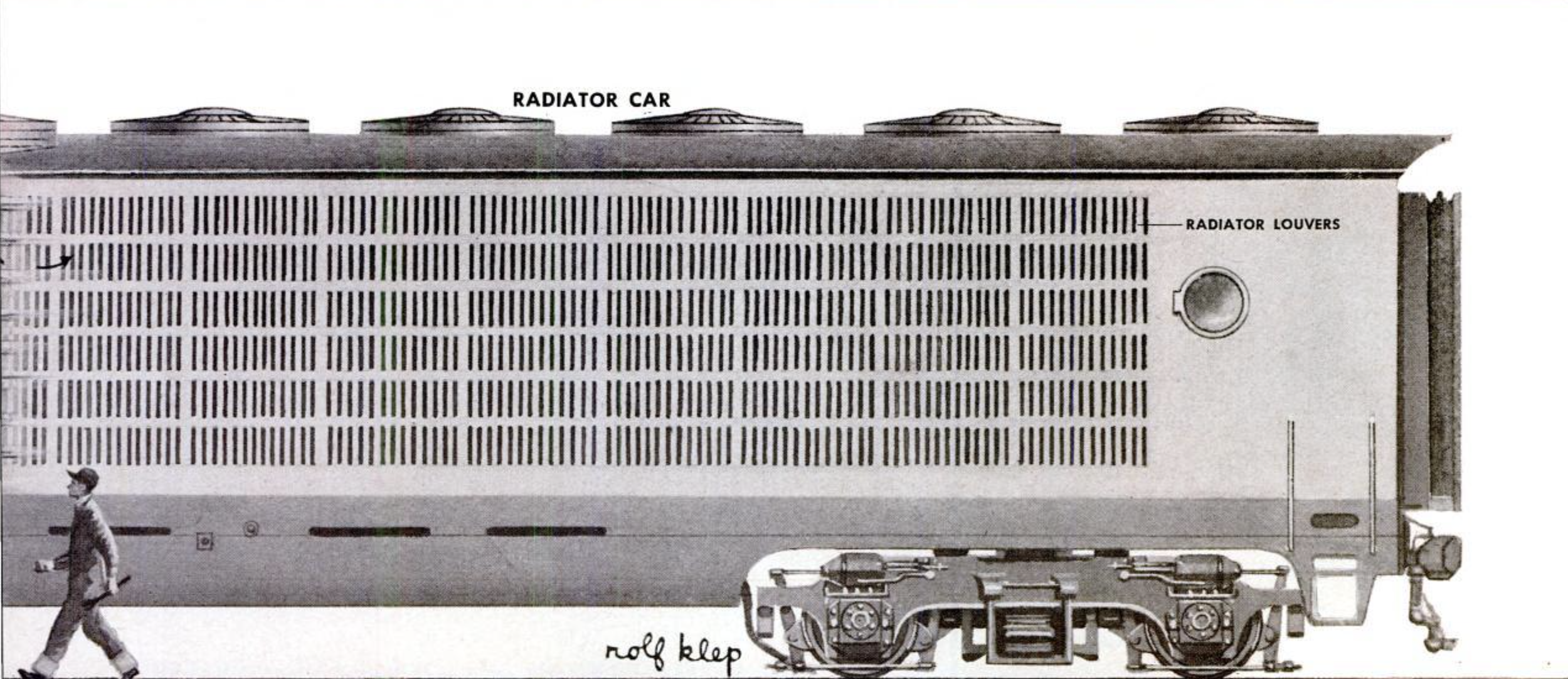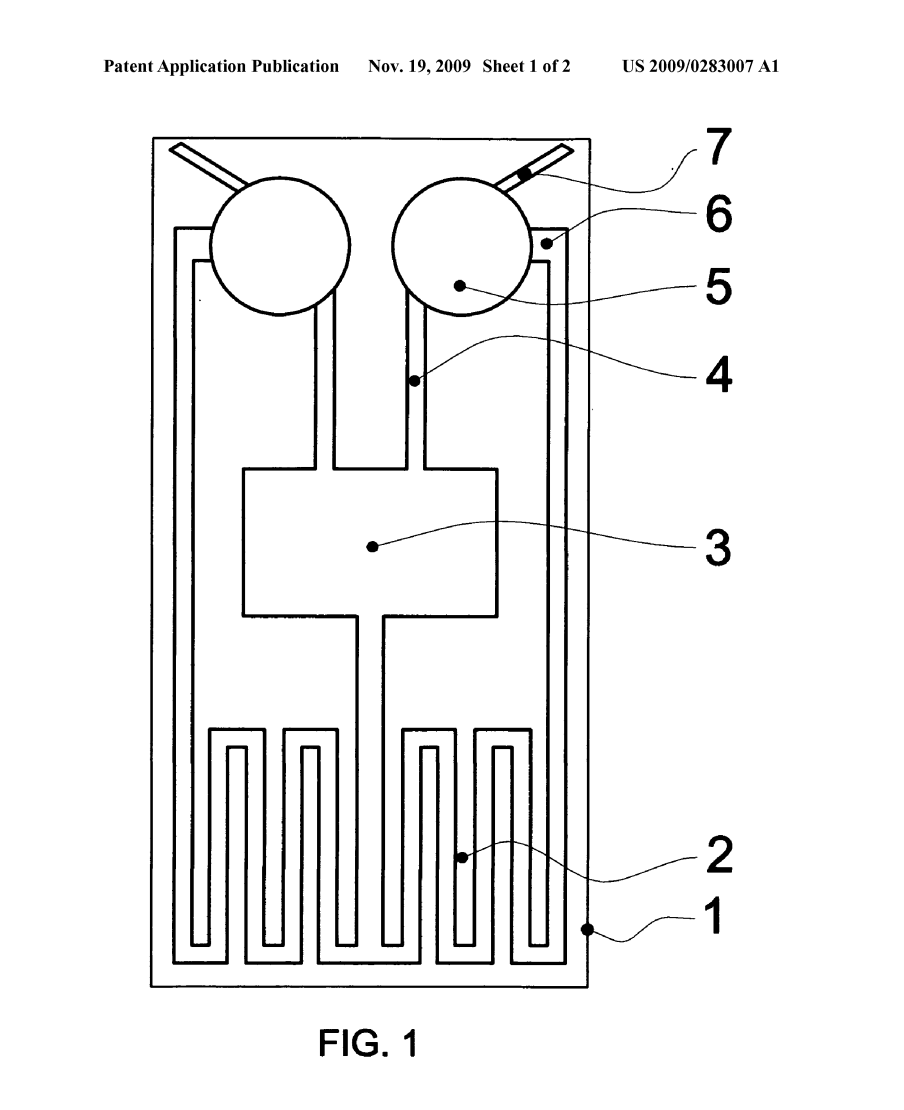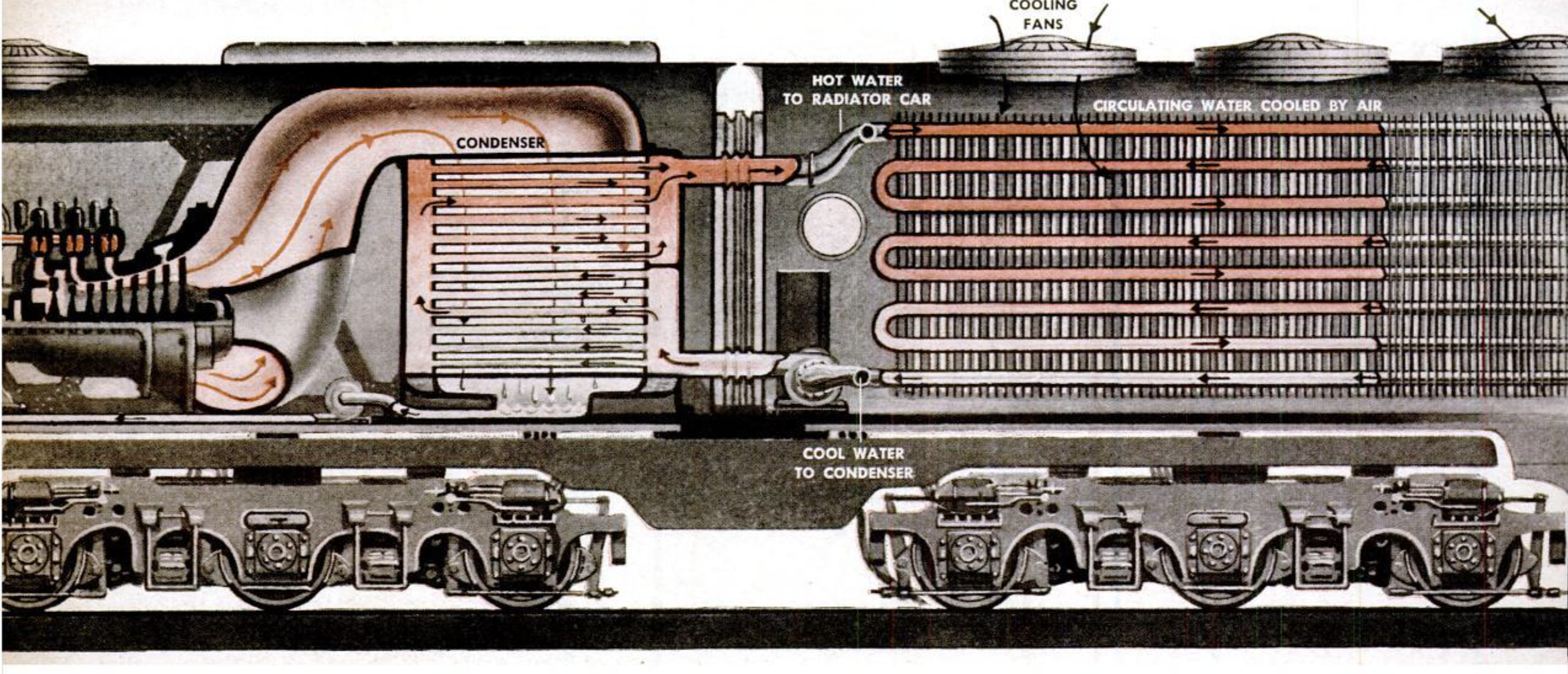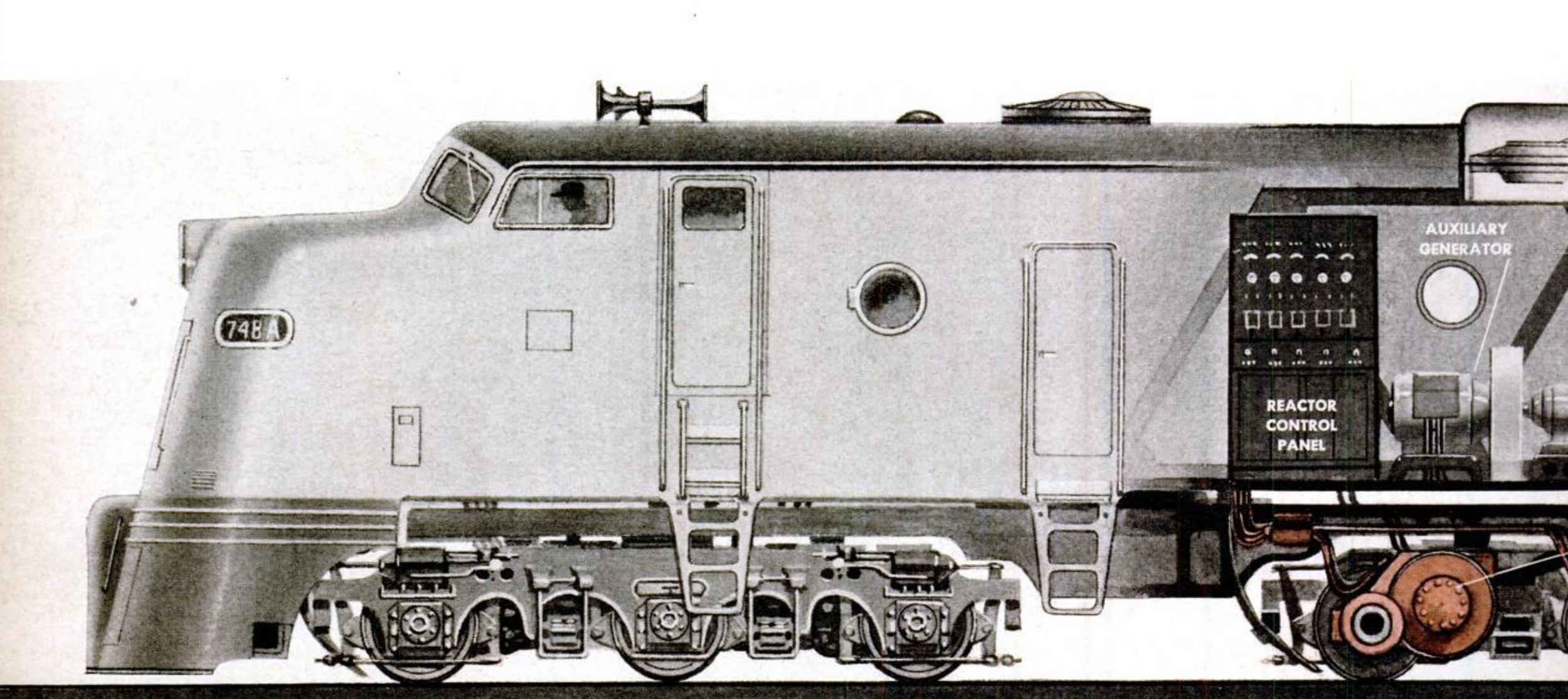The Atomic Train: Nuclear-Powered Locomotives
During the time of bomb tests in the Nevada desert; nuclear power implementation found its way into various industries. One of which was transportation. At this point, the Air Force was putting serious research into the implementation of a nuclear-powered bomber. All the while; in 1959, the N.S. Savannah was launched into the Merchant Marine as the world’s first nuclear-powered merchant ship. The ship, which is now designated a registered National Historic Landmark, has been moored in a Baltimore port since 2008. Finally, as part of its decommissioning; its nuclear reactor was removed. In the fall of 2022, after 60 years of service, the historical Savannah was retiring from active service.
Even nuclear-powered locomotives made their case in various countries in this atomic age. The beginnings of nuclear implementation came courtesy of Dr. Lyle Borst at the University of Utah. He proposed using a 360-ton X-12 Locomotive that carried a nuclear reactor powered by Uranium-235. Though Borst pitched his idea to various railroads, and even the Association of American Railroads. His early idea was never given time due to logistical challenges.
Same kind of deal with British Rail’s 1952 proposal. The design that was dubbed the ‘Eagle Comic’ was simply an artist impression design of what a nuclear-powered locomotive could look like on British Railways. Despite being on the Atomic Train Project, a mix of nuclear-reactor troubles and public perception of the project doomed the project. Same story with Germany’s Atomic Train Design; proposed by Krauss-Maffei.
Next up was the Soviet Union’s proposal. The USSR’s contribution to the Atomic Train Project was a massive cotton trekking train powered by a nuclear reactor. However, faulted with the same problems the other proposals faced between the reactor and the public’s worries about the project. Even more recently, in 2008, plans for a Maglev Train driven by a Nuclear Reactor courtesy of inventor, William Gregory Taylor. Upon further research Taylor filed a patent for his maglev/nuclear combo machine described as follows;
"This device is a magnetically levitated (maglev) locomotive powered by an onboard nuclear reactor. The locomotive carries a small portable nuclear reactor that heats a fluid to boiling, and passes it through electric turbine engines to produce electric power. The fluid/steam then recirculates through cooling radiators condensing it back to liquid before it passes back into the reactors again. The electric power is used to power and cool the onboard electromagnets, which oppose passive permanent magnets or magnetic coils in the roadbed. The onboard reactor is capable of providing greater electrical power than previously described maglev systems. This, in turn, provides greater power to the superconducting electromagnets, which translates into greater lift capacity and greater speed.”
So, why is it so difficult to implement nuclear power on rail? Well, physically it is just downright difficult to provide a passable amount of shielding within the basic geometry of a locomotive. These lead-lined locomotives were massive; such as Borst’s atomic dream. The X-12. It was designed to transport high radiation material at the Idaho National Laboratory in Idaho Falls, ID. Due to literally how thick it was, a relatively small deisel engine had to be used. The operator would be sitting in a cylindrical cab with walls 18 to 24 inches thick. The crew of which; would be sealed within during operation. Just one window made with many layers of lead-glass 12 inches in diameter provided a glimpse out from the front. Being as big as the largest steam engines; the two-sectioned X-12 would be 160ft long and have a steam-generating atomic reactor incased in a 200-ton shield. Overall, the whole locomotive weighed in at 360 tons. So heavy, in fact, that its wheels alone would be driven by electric motors.
A June 1954 article of LIFE Magazine explains in-depth the inner workings of this behemoth;
“Water piped into thousands of tubes running through the cylinder is turned to steam by the reactor's heat. After passing through the moisture trap the steam goes on to turn the turbine, which drives four electric generators, two on each side of the reactor shield, producing 7,000 horsepower (hp). On leaving the turbine the steam is reconverted to water by a condenser Since a second water system is necessary to cool the condenser, Dr. Borst’s design calls for a 65-foot radiator car behind the locomotive. Because the steam generated in the reactor is slightly radioactive it cannot be used to heat the train, and an additional steam generator is provided.”
The Doc also estimated one would cost $1.2 million to build; about twice the price of a four-unit Diesel of similar power. Despite the price, Borst had faith in his design. Finally, with the implementation of the onboard reactor designed by Babcock & Wilcox Inc. The atomic locomotive, the massive X-12 could run for months on one charge of U-235. However, what was gained in efficiency was more than likely lost in safety. From the mid-50s onwards; the US public seemed to be more aware of the safety hazards that onboard nuclear reactors brought.
However, after University of Utah feasibility studies of the locomotive were conducted. The atomic powered model had been found to be technically feasible. Only technically feasible because some data was curiously missing from the study. For example, fuel costs were omitted from the study, but later on a fuel pricing a stipulation was added. "If Uranium-235 costs less than $7 per gram the locomotive would compete with the present (1954) diesel supply chain.” That ends up being in $79.90 in 2023 USD. According to the US Department of Energy’s 2021 Uranium Spikes Price List; today’s cost of purchasing ~1.7g of the U-235 (Uranium Hexafluoride) needed to power the locomotive would be $59,420. In turn, just the fuel cost alone would equate to about $35/g. Furthermore, in 1954 the X-12 was already using government subsidies with get the U-235. Despite the Atomic Train only having to refuel once a year. Nuclear fuel costs were four times the costs compared to conventional locomotives and the ever cheapening market of 1950s diesel.
X-12 Specs (courtesy of University of Michigan Library)
$1.2 Million (1954 USD)
Weight - 360-tons
Length - 160ft long
Radiator Car Length - 65ft long
Normal Turbine Rating - 8,000hp
Motor Electricity Rating - 7,000hp
Overload Turbine Rating - 10,000hp
Rail Voltage Rating - 550v
Notable Atomic Locomotive Costs (1954 USD)
GM Deisel Unit - $77,600 ($885,696 in 2023)
2 Trane Company Cars + Build - $102,560 ($1,170,580)
Chassis & Auxiliaires - $150,000 ($1,712,041)
Turbinal System - $250,000 ($2,853,402)
Reactor Shield & Vessal - $150,000 ($1,712,041)
Reactor Control & Auxiliaries - $400,000 ($4,565,443)
An alternative way of harnessing this energy through off-board powerhouses. These nuclear power plants provided energy in the form of electrified rail lines. Thus, for the few locomotive models that had them, onboard nuclear sources were phased out.
So, where in the rail industry can nuclear power possibly be used? Well, besides in the electrification of track, not in very many places. Time and time again, proposals for atomic locomotives stop far short of implementation. No matter the era; projects like these get canned mostly due to issues in the locomotive’s design, perceived public safety, and the economics of the project. However, premium long haul passenger or freight service is another possibility. A combination of rapid accelleration and high continuious power on a line as this may justify the use of such an engine.
For true optimization, however, heavy freight service under limited circumstances may be the best line of work for an atomic train. According to the original 1954 University of Utah study, “An ideal duty would be hauling ore upgrade over a roadbed sufficiently straight, so that the empties could be returned at high speed.” In these efficient conditions, the overload abilities ranging 9,000-11,000hp could be used in the train’s accelleration; allowing the full output to be used throughout the entire run. Furthermore, the return of an empty run could be rapid too on account of the X-12’s high dynamic breaking ability. One last quote we’ll use from the 1954 X-12 Study; “400 hours per month at full output seems quite possible under these optimum conditions.”
I hope you enjoyed this Nuke Train rabbit hole I fell through.
Sources //
https://books.google.com/books?id=bVMEAAAAMBAJ&lpg=PA78&ots=oNcGmhCvuD&dq=x-12%20locomotive&pg=PA78#v=onepage&q=x-12%20locomotive&f=false
http://large.stanford.edu/courses/2015/ph241/sanders1/
https://locomotive.fandom.com/wiki/Nuclear_locomotive
https://www.energy.gov/sites/prod/files/2020/11/f80/2021%20CRM%20Price%20List%20Draft%20V1_Nov%202020.pdf
https://babel.hathitrust.org/cgi/pt?id=mdp.39015020157130&view=1up&seq=5
https://www.thedrive.com/news/this-lead-lined-locomotive-hauled-experimental-nuclear-reactors














